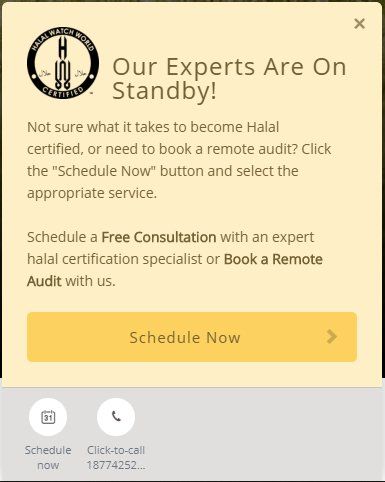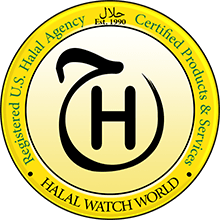1-877-HALAL-WW (+1-877-425-2599)
EVALUATION AUDIT SCHEDULING
EVALUATION SCHEDULING INSTRUCTIONS
Here is concise version of evaluation scheduling instructions. Make sure to read the detailed version provided below for more information.
EVALUATION PREPARATION
EVALUATION SCHEDULING INSTRUCTIONS
To schedule a remote audit, click on the button at the bottom right-hand corner of the screen which says “Schedule Consultations & Remote Audits.”
Click on the “Schedule Now” button and select the “Remote Audit” option. Choose a date and time to set up a meeting.
Please note, we ensure that a level of professionalism and cordiality is maintained at all times. We expect that a reciprocal policy of transparency and openness is extended in kind to our team members throughout the audit and review process. This helps us to establish the level of compliance your company will be committed to during the certification period.
EVALUATION PREPARATION
Opening Meeting
- Overview: Go over basic principles of halal certification
- Discovery: Gather basic information about the facility, personnel, and daily business activities
- Fitness: Assess the facilities’ standards for quality and business
- Halal Deposition: Determine if the facilities are compliant with halal dietary restrictions
Walkthrough
- Evaluators are instructed to film or photolog (at their discretion) primary contact points throughout the facility. The walkthrough is performed by viewing the product from point of entry completely through to point of exit from the facility.
- Halal Area Risk Management (H.A.R.M.) locations are identified within the facility. These areas are classed as nonconformities and are considered to have a potential for cross-contamination or have the potential to denigrate the integrity of the Halal product. Mitigating procedures are required and must be approved in the corrective action phase.
- Machine/Tool sanitation methods are documented. This is especially important in high-risk facilities that process both halal and haram products using the same equipment.
- Storage and warehouse locations are inspected for proper segregation methods for Halal and non-Halal products. Evaluators determine whether or not halal products are easily identifiable, and that mislabeling, or mix-ups are not possible. Computer monitoring systems are also taken into account.
- All raw materials, packaging, and finished products are identified and catalogued throughout the tour.
- Sanitation equipment is identified and catalogued throughout the tour.
- The level of integrity of the personnel is assessed. Honesty and transparency are key factors.
Closing Meeting
- Evaluator summarizes and records their observations during the walkthrough.
- A risk assessment is made based upon the following metrics:
- HIGH RISK = Facility processes both halal and haram products using indifferent tools, machinery, or utensils.
- MEDIUM RISK = Facility processes both halal and haram products using segregated tools, machinery, or utensils.
- LOW RISK = Facility does not process any haram products on or inside of the premises.
- Evaluator provides a final assessment, communicates any non-conformities, and provides a suggested certification status. Signatories are inked, and evaluator report submitted to all parties.







